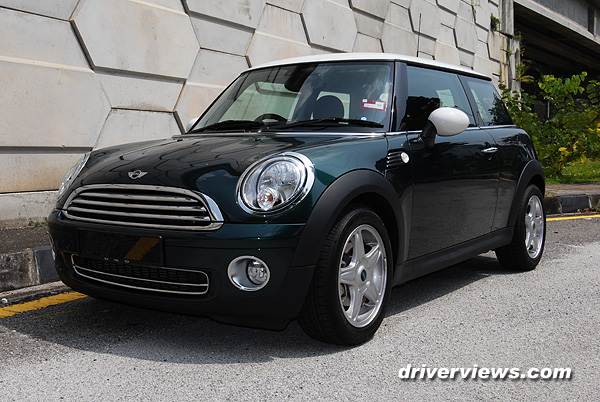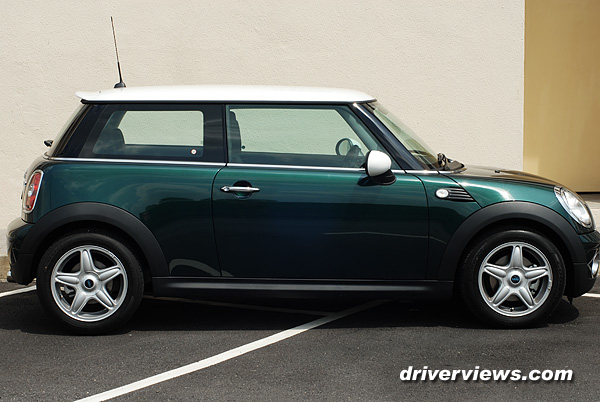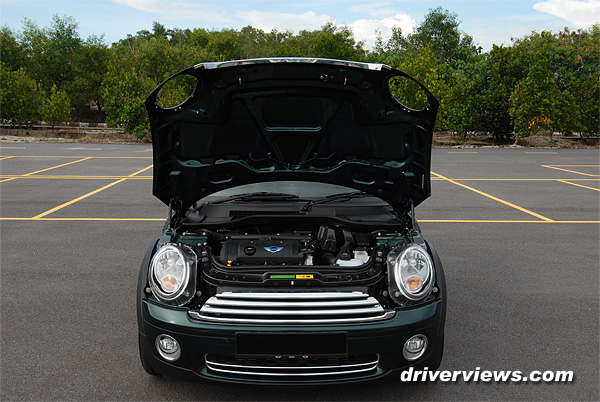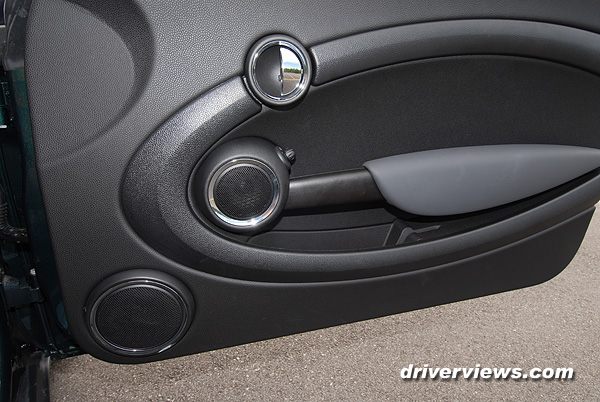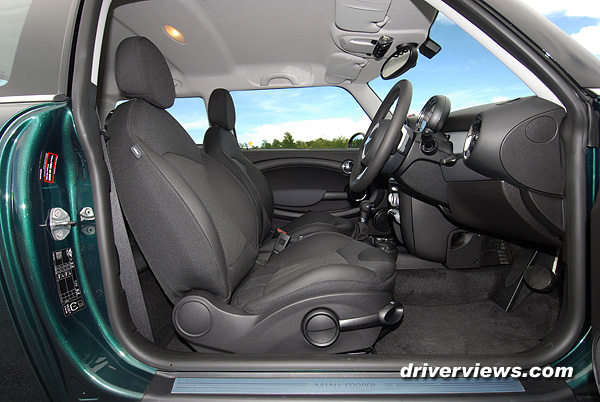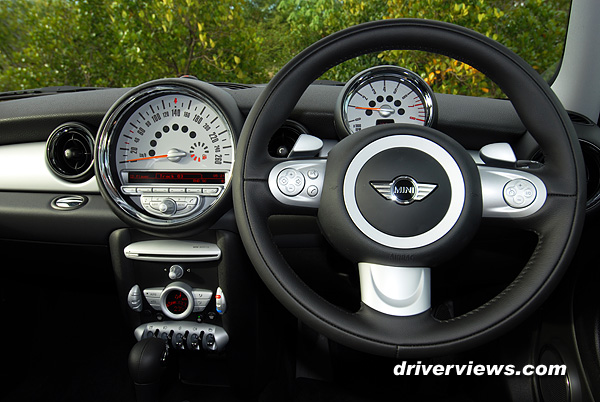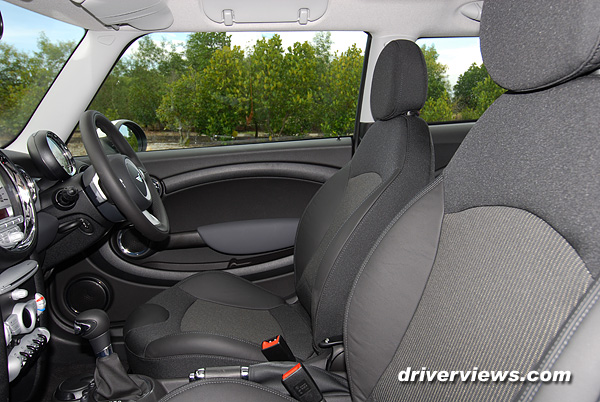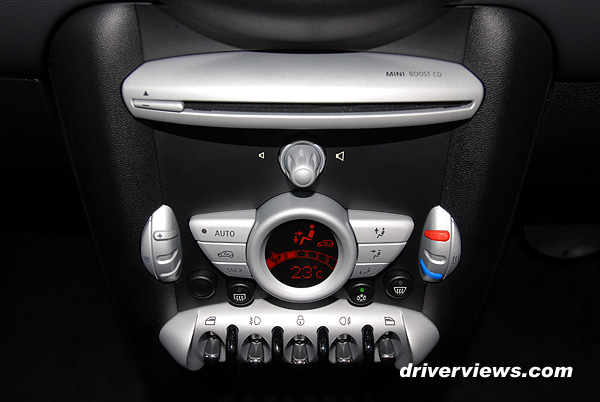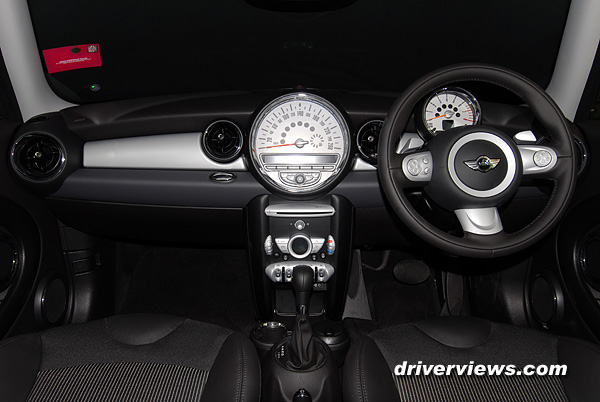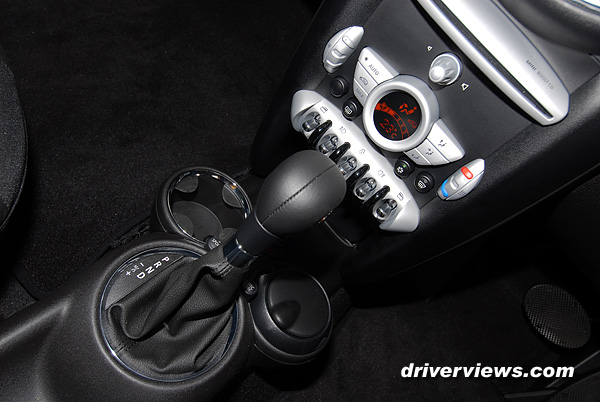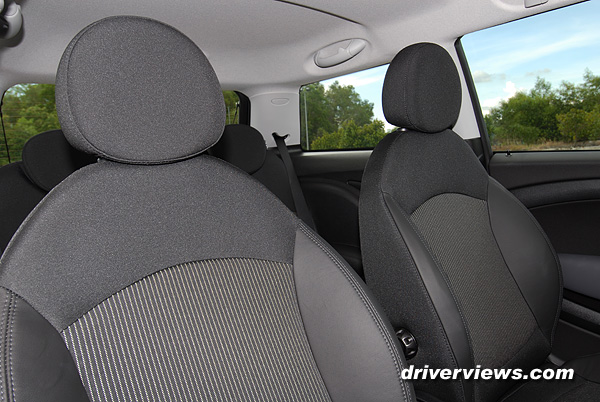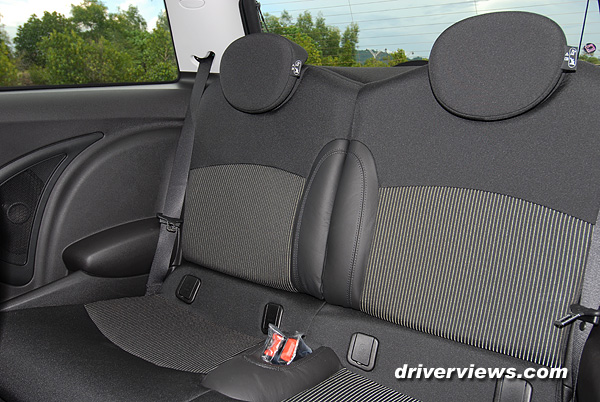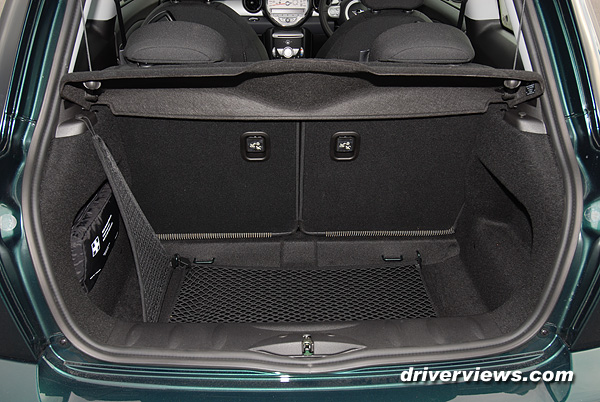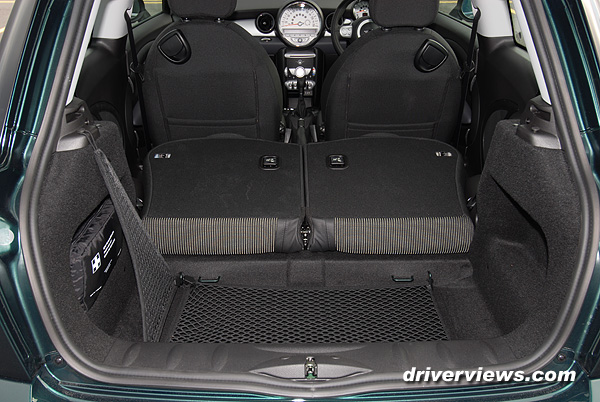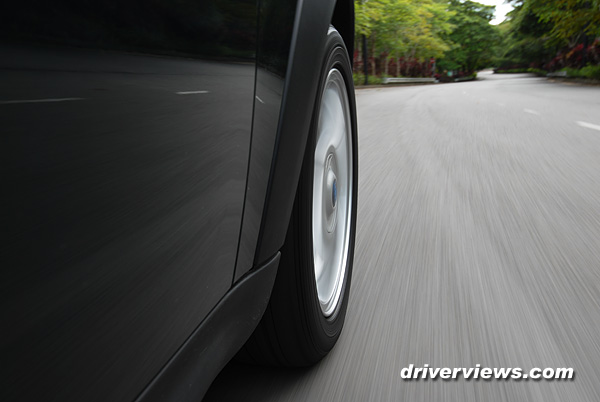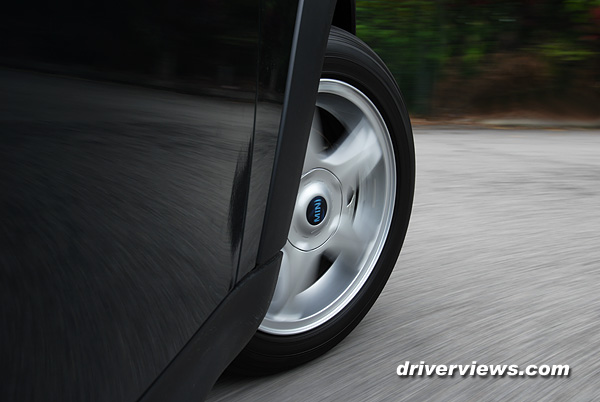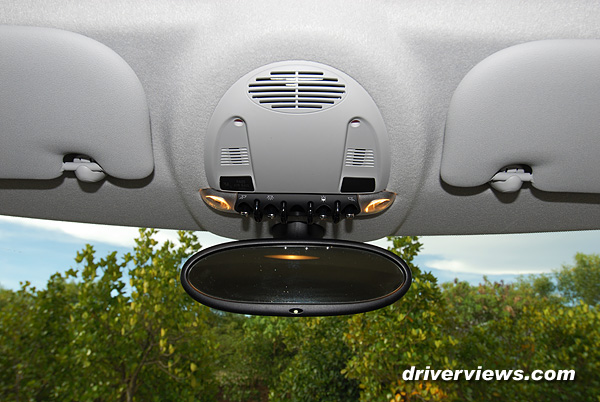Time flies and it has been a full circle since my first post last year which was on the Mini Cooper S. We revisit the Mini again but this time on its entry level model the Mini Cooper. It is heartening to note that Mini celebrated its 50th anniversary last year and the Mini brand name is still growing from strength to strength.
The original Mini Cooper model itself was first launched in 1961 by the British Motor Corporation (BMC). BMW obtained Mini brand through the acquisition of the Rover Group in 1994. It was not until 2001 when BMW finally launched the redesigned Mini Cooper with all the bells and whistles of a modern car, packed with more power and numerous safety features.
My first drive with the redesigned Mini Cooper was about 3 years ago. That car was the 1st generation model which had manual transmission. It was generally an enjoyable drive although the car struggled to cope with a full load of passengers going uphill.
This test model is the 2nd generation Mini Cooper first introduced in 2007. The features of this car are quite generous. Built quality is first rate and from the moment you open/close the doors, you know that this car is built tough.
The seats are mostly fabric with some leather at strategic places. The fabric is very comfortable but I am not sure of its long term durability as it feels a bit fragile. Both the driver and front passenger enjoys sports seats which are height adjustable. Seat adjustments are done manually using levers at the left, right and bottom of the seats. To enable fuss free entry for rear passengers, there is a large lever near the headrests of both front seats.
The interior of the car retains the charm of the original Mini and would need some getting used to for first timers. The oversized speedometer is located at the centre of the console with the tachometer staring at you just behind the steering wheel. In the past I thought this was unusual and perhaps purposefully done to maintain the uniqueness of the car. Nevertheless, this set up is useful for those who wish to monitor the engine speed in places where you do not have to worry about the speed limit.
The car was still very new when it was first delivered to us. There are some parts which are still left unwrapped. You may notice that some of the badges, door sills and even the logos at the rims are bluish. These are the protective film covers which we have decided to leave it at that for the benefit of the next owner.
The switches including fog lights, central locking and power windows are all localized at the centre console. The car comes with the option to disable the dynamic stability control and a sports mode. One useful feature which should be included is the park distance control. Although the car’s dimensions are considered small, a PDC will at least take away some risk of rear-ending especially when you reverse.
DRIVING IT
The car seemed to dislike cold starts as the engine did not sound too convincing upon ignition (audio file below). The engine note is very prominent even when the car is idling. It becomes louder when the car is on the move. Volume needs to be raised at above average levels for enjoyment of music. Any intimate conversations are best done with the engine switched off. Perhaps this is to be expected, as this is to mark the distinctive character of the car.
The engine, code named N16B16M0 is a transversely mounted 4 cylinder 1,598cc petrol engine. Its max power is 88kW / 120 hp @ 6,000 rpm and its max torque is 160Nm @ 4,250 rpm. Acceleration from 0 – 100 km/h is achievable in 10.4 seconds and its top speed is 197km/h.
From a stop and go position, the front wheel driven Mini Cooper accelerates convincingly with power and authority. There is a unique exhaust note when you floor the accelerator which heightens the driving experience. Unlike the Mini Cooper S and the JCW, I did not notice any torque steer for this car. This is not unexpected due to the relatively modest power output and torque.
Transmission is 6 speed automatic with steptronic. There are gearshift paddles on the steering wheel if you wish to engage steptronic or override the gears on the move. I noticed the gearing is short and the engine runs on relatively high rpms possibly to improve the response of the car taking into account the modest power output.
I recalled that I was not too impressed with the Sports mode in the Mini Cooper S. However, for this car the sports mode is much improved. Once engaged, I could feel a distinct difference in the steering, suspension and the shifting modes of the transmission. The steering felt heavier and sharper, the suspension tightened and gear changes are delayed just a bit longer to improve response.
In the ‘normal’ driving mode, the steering is well weighted and accurate. This I think is among the Mini Cooper’s strengths as the car is able to provide a very direct feel to the driver. It is able translate your steering inputs quickly and accurately to the front wheels giving you the confidence that you will not hit the kerbs when you are making sharp turns.
The sampled car is very new and by the time we completed the test run, we had accumulated a mileage of about 500km+. Initial average fuel consumption was quite high at 10.8 litres per 100 km. It later improved to about 9.8 litres per 100 km. This is still quite far off from the stated specs of about 6.7 litres per 100 km. However, I expect fuel efficiency to improve with further running in.
The suspension set up of the Mini Cooper is on the firm side. In fact some may consider it ‘harsh’. Every bump and hump is clearly felt in the cabin. Probably the most uncomfortable and bouncy time (which occurs quite often in town roads) is when we have to drive through a long run of parallel yellow lines which is meant to alert the driver of the danger ahead.
Tyres are 16 inch Goodyear Excellence run flats 195/55 R16 which performed adequately but is on harder compounds. With the firm suspension set up, the tyres should preferably be on softer compounds which may help improve the ride quality. Again, my guess is that the firm ride experience may be deliberate to mark the character of the car? In spite of all this we still enjoyed our drive as we are quite familiar with the Mini Cooper’s unique characteristics.
Boot space as expected is very limited. You can probably fit in one or two large bags at the rear. For additional boot space, the rear seats can be folded downwards. However, the floor is not completely level as there is a bit of a hump caused by the rear seats.
For entertainment, the car comes with a Radio MINI Boost CD system. Radio reception is first rate. In its default setting, the sound is very flat and lacking in dynamics. Quite a fair bit of enhancements are required to make the music more audible and palatable. Coupled with the prominent engine note, it is sometimes a struggle to hear the music clearly.
Despite the car’s distinctive characteristics which may not endear it to those seeking refinement, it still retains an unmistakable charm. Until today many are still keeping their 30 plus years Mini (BMC models) in good running condition. Such is the appeal of the Mini Cooper. It still draws admiring and curious glances even during our test drives.
There is a certain intangible quality and attraction to it that is difficult to quantify. We have had many test vehicles on our driveway over the past year but so far only the Mini Cooper (a Cooper S) elicit a query from a neighbour who asked whether the car is for sale. Such is the inherent attraction of the Mini brand name.
After 50 years on the road, the future looks bright for the franchise. Newer and dynamic models such as the Mini Roadster, Mini Coupé, Mini Crossover are being lined up over the foreseeable future to further lengthen the brand’s appeal. We might even see a Mini Cooper competing in the WRC giving rivals a run for their money.
VITAL STATISTICS
| Engine: | 4-cylinder petrol engine | ||||
| Capacity: | 1,598cc | ||||
| Max Output: | 88kW (120hp) / 6,000rpm | ||||
| Max Torque: | 160Nm / 4,250rpm | ||||
| Top Speed: | 197km/h | ||||
| Acceleration 0-100km: | 10.4sec | ||||
| Fuel Consumption: | 6.7ltr/100km | ||||
Source: Mini Brochure
Note: Please reconfirm the above specifications with an authorized Mini dealer
SOUNDS
Click on these to sample sounds from the car!
